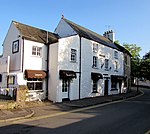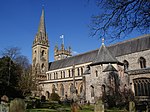The Cathedral School, Llandaff
1880 establishments in WalesAC with 0 elementsCathedral schoolsChurch in Wales schoolsEducational institutions established in 1880 ... and 6 more
Grade II* listed buildings in CardiffIndependent schools in CardiffLlandaffMember schools of the Headmasters' and Headmistresses' ConferenceUse British English from May 2015Woodard Schools

The Cathedral School, Llandaff (Welsh: Ysgol y Gadeirlan, Llandaf) is a coeducational independent day school located in Llandaff, a district north of the Welsh capital Cardiff. Originally established as a choral foundation to train choir boys for the affiliated Llandaff Cathedral, it is now part of the Woodard Schools foundation and continues to provide choristers for the cathedral. It is the only surviving Anglican choir school in Wales and is a member of the ISC, IAPS and the Choir Schools Association. It is a member of the Headmasters' and Headmistresses' Conference of leading independent schools.
Excerpt from the Wikipedia article The Cathedral School, Llandaff (License: CC BY-SA 3.0, Authors, Images).The Cathedral School, Llandaff
Cardiff Road, Cardiff Llandaff
Geographical coordinates (GPS) Address Website External links Nearby Places Show on map
Geographical coordinates (GPS)
| Latitude | Longitude |
|---|---|
| N 51.4936 ° | E -3.216 ° |
Address
The Cathedral School
Cardiff Road
CF5 2YH Cardiff, Llandaff
Wales, United Kingdom
Open on Google Maps











